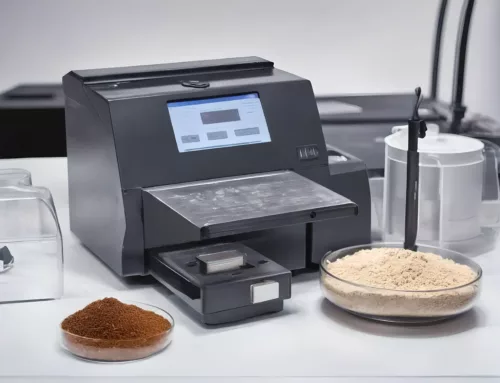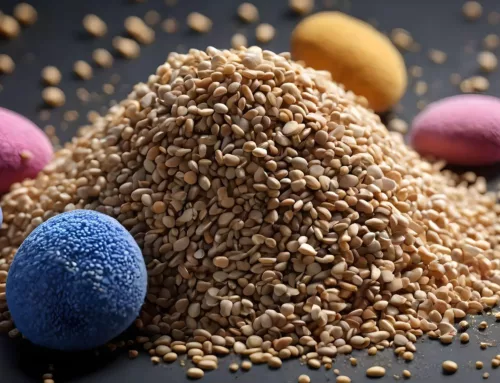Each year we bring you one or two editions of our Delft Solids Solutions Reporter news paper bringing you updates on our business and development upcoming events and more. This year we will offer this as well but we will bring you a new format. Our newspaper, for the very first time has a theme this year. We want to share our developments in regards to Powder Processing. This edition will highlight the recent projects we’ve done related to powder processing. Delft Solids Solutions, in addition to the laboratory services we offer, also offer various industrial process set-ups on a lab scale. It comprises of several powder processes such as: cryogenic milling, mixing, granulation coating and pneumatic conveying.
Cocoa nibs are typically treated under a process named as the ‘Dutch process’. In this process, the nibs are alkalized in order to give the resulting end product a milder taste. Cocoa nibs contain a health-benefit component named as flavonoids, which provides antioxidant effects. Cocoa processing has two aims: (1) Transferring cocoa nibs into milder tasting granules. (2) Applying coating on granules to prevent flavonoids from oxidization upon exposure to air.
Delft Solids Solutions has successfully achieved these aims by combining the following Powder Processing steps:
Cryogenic milling: for micronizing cocoa nibs
Cryogenic milling is perfect on micronizing a wide range of heat-sensitive materials in the food industry. Delft Solids Solutions has further optimized the particular cryogenic milling process by using liquid nitrogen with a specific sieving fraction of the cocoa nibs. This has resulted in a perfect balance between the grinding yield and the particle size, while the powder quality has been preserved. The cryogenic milling is proven as a reliable process with a narrow particle size distribution for cocoa powder.
Granulation for agglomeration of cocoa-based mixtures
Cocoa-based powder mixtures consist of cocoa powder, sugar and an alkalizing component. Sugar acts as a sweetness enhancer and binder. The granulation process takes place in the high shear granulator, a unique device equipped with chopper, impeller and controlled water dosing system. The design comprises a flexible mixing chamber that is also used for the mixing process. Combining two processes can minimize the attrition and powder segregation from charge/ discharge actions.The granulation process can be optimized by changing various process parameters such as impeller speed, chopper speed, binder percentage and process time. The various parameters enabled us to adapt the process to the quality required for each different application. The granules formed can be customized by size and density.
Besides easier handling, the additional advantages of granulation are that it reduces the dustiness potential for dusty materials in order to control explosion levels and it suppresses segregation.
Mixing for alkalizing and homogenizing cocoa powder
To alkalize and homogenize cocoa powder, we have further optimized the mix-ing process. The results obtained in a small bench-top high-shear mixer indicate a highly homo- geneous mixture with adequately alkalized cocoa powder.
The high-quality mixture consists of a homogenous powder with a narrow particle size distribution, resulting in ideal binder dispersion property for further processing. The homogeneity of the mixture is acquired from top to bottom in each batch. The high-shear mixing has an extra benefit in breaking down all unwanted agglomeration under an over-moisturized and alkalized environment. The high-shear mixing typically requires less time than the traditional mixing, which is beneficial for suppressing the oxidation of the flavonoids.
Coating for protecting flavonoids from oxidization
Shear-thinning syrup is used as a coating layer for the cocoa granules. The coa-ting process is exe- cuted in a coating pan equipped with an adjustable drying system and dosing system for heat-sensitive products like cocoa.
The coating process was optimized by changing various process parameters such as coating concentration, dosing rate, the rotation speed of the pan and process time. The coating process can be used for different applications with different coating materials in order to get the perfect coating layer.
Infant formula
Infant formula powder products are often transferred between various units in the plant by pneumatic conveying. Wear of powder particles is one of the major phenomena and issues in the conveying system. It can change the powder product quality, such as the solubility, the bulk density, the particle size and shape and it easily creates fines.
Delft Solids Solutions is capable of mimicking industrial conveying on lab-scale to quantitatively predict the wear of powder/granule particles. The design and operating terms of pneumatic conveying for wear of particles are varied by different conditions. Bend types, air velocity and number of bends are three critical parameters that influence the particle wear during powder conveying.
Mimicking industrial conveying on lab-scale
With the goal of quantifying the particle wear under desired conditions in pneumatic conveying, lab-scale experiments on mimicking industrial conveying can be conducted with all three different parameters (air velocity, bend shapes and number of bends). Air velocity: we use diluted phase as the conveying flow.
The flow rate is variable to 3 m/s, 5 m/s and 7 m/s. Bend shapes: we have three different bend shapes: radius, mitred and T-shape bend, which are widely used in industrial set-ups. The maximum of bends in our setup is 9. This number of bends can cover most of the conditions in most industrial plants.





